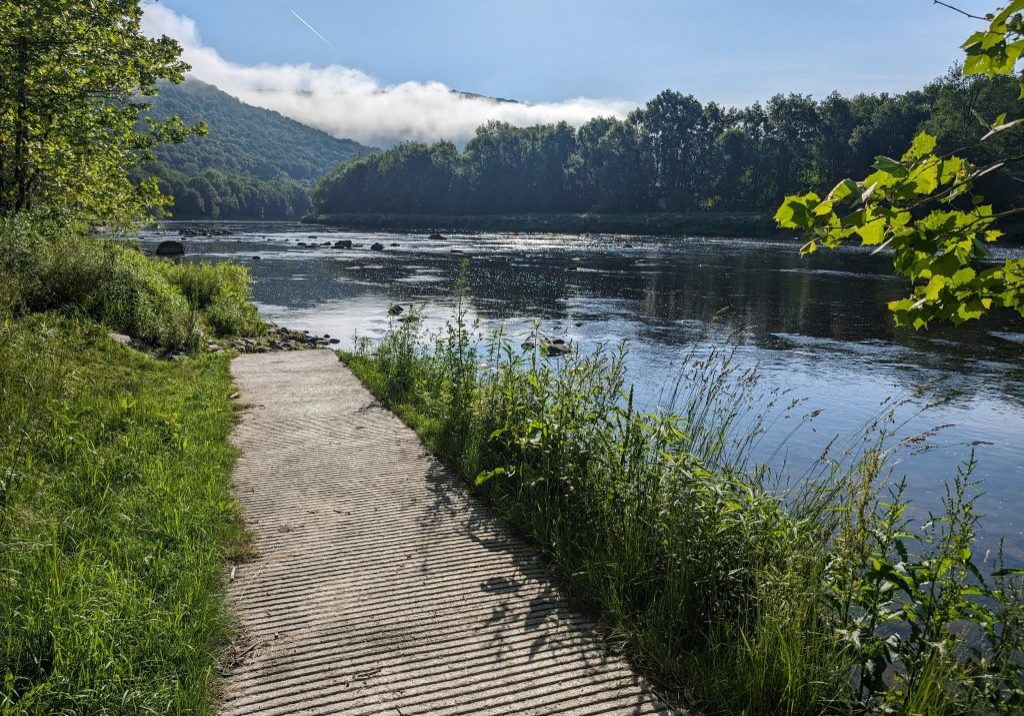
Lackawaxen Basin earns top scores for water quality
Pristine conditions and lack of industry combine to keep it clean
| June 22, 2022
Editor’s note: This is the latest in a series of stories exploring water quality in the nine basins in Pennsylvania that are part of the larger Delaware River watershed. How clean are your waterways, Pennsylvania?
If the Lackawaxen basin in Pennsylvania were an Olympic competitor, it would easily win a gold medal.
Of the nine basins in Pennsylvania that make up the Delaware River watershed, the Lackawaxen emerged as the cleanest, according to a recent Pennsylvania Department of Environmental Protection report that assessed the water quality of streams in the state.
The report found only five stream miles in the basin that were considered “impaired” by contamination or pollutants harmful to aquatic life.

In the other categories — for recreational uses, potable water and fish consumption — the basin scored zeroes. (In the case of stream miles considered impaired, zero is a perfect score.) It should be noted that the DEP did not reassess the basin in its 2022 report and that these figures were carried forward from its prior assessment in 2020.
For activists who look out for the well-being of the Lackawaxen River and basin, the findings were welcome news and an affirmation that the conditions that made for such a strong showing should remain that way.
Howard Leifman, the president of the Lackawaxen River Conservancy, put it this way: “The Lackawaxen is as pristine as it is because there is very little on it. So long as there is nothing there to disrupt it, it should take care of itself.”
The Lackawaxen basin, which is largely in the Poconos region, includes parts of Lackawanna, Monroe, Pike and Wayne Counties.

The natural landscape of the basin keeps it comparatively pollution-free, Leifman said. Much of the land is mountainous without a lot of flat areas to develop, which makes it unattractive for fracking. The basin also lacks industrial users, which means fewer major sources of pollution.
Wild and Scenic designation sought
Leifman said the conservancy is taking preliminary steps to get the Lackawaxen designated by Congress as a Wild and Scenic River as a way to preserve its high quality.
He said the conservancy has been speaking at different events to gain support for the designation and been getting positive feedback.
The National Wild and Scenic Rivers System, which was enacted in 1968, protects rivers with “outstandingly remarkable values,” according to the National Park Service, which manages and provides guidance on rivers with such a designation. Those values can include unique scenic, recreational, geologic, fish and wildlife, historic, cultural, or other similar features, according to the NPS.
Other federal designations exist along the Delaware. Among them: the Upper Delaware Scenic and Recreational River, the Middle Delaware National Scenic River and the Lower Delaware Scenic and Recreational River.
Looking out for the river
Devan George, the communications coordinator for the Pike County Conservation District and a conservancy board member, said residents have a vested interested in looking out for the basin’s health.
She noted that the area around the Lackawaxen River features a great deal of private land ownership, with many of the homes spaced apart.
“Because there are so many people that live in this area as their second homes, or they came here to be closer to nature, there isn’t a lot of pressure to develop or pollute because that would really take away from the reasons that they came here in the first place,” she said.
Conservancy board member Glen Johnson noted that in the hamlet of Rowland in Pike County, which is on the river, there is a large Norwegian-American community that dates back generations. This community does not want major changes in land use, “especially since they have all come ‘through’ Brooklyn and want an escape from an urban environment,” he said.
George agreed that people in the basin tend to be very protective of the land along the river.
“Just in the last few years, a Rails and Trails group was proposing a hiking trail that runs the length of the Lackawaxen River from Honesdale to Hawley, and people were incredibly worried about opening the riverfront up to the public and what that would do to the river and their property,” she said.
The Lackawaxen River Conservancy was founded more than 20 years ago in response to concerns about increases in commercial rafting, Johnson said.
“We all love to float down the river, but don’t want it to become like the Delaware with literally ‘heavy traffic’ of rafters on summer weekends,” he said. “Most of those folks are having clean fun, but with numbers also come problems, especially with abuse of private property.”
George, referring to the Pike County Conservation District, said, “We have a saying we use here: ‘We all live downstream.’”
It’s a reminder that wherever someone lives, they are downstream from someone else and they are subject to the uses – and abuses – from upstream. It’s also a reminder, she said, that we all have to do our part as individuals to protect water sources.
Michael Mele contributed reporting.







